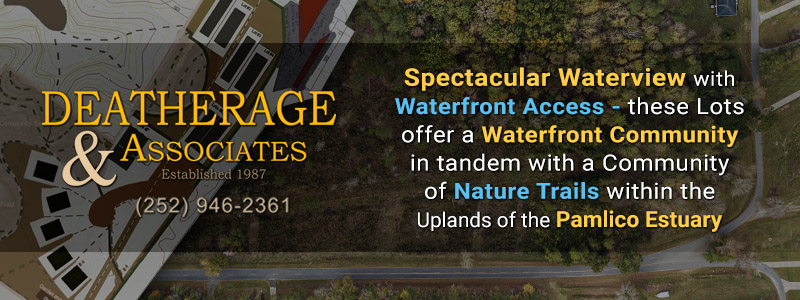Your Basic Needs: Food, Shelter and The TRUTH
11 Results found for lords proprietors
[ Search Users ]|
The plight of rural North Carolina, like the weather, generates lots of talk but little action
Published: Monday, August 21st, 2017 @ 3:23 am
By: Tom Campbell
|
The plight of rural North Carolina, like the weather, generates lots of talk but little action
Published: Monday, August 21st, 2017 @ 3:23 am
By: Tom Campbell
|
When did North Carolina become known as North Carolina and acquire its modern shape?
Published: Saturday, January 7th, 2017 @ 1:44 am
By: John Locke Foundation
|
When did North Carolina become known as North Carolina and acquire its modern shape?
Published: Saturday, January 7th, 2017 @ 1:44 am
|
Upcoming events from Arts of the Pamlico
Published: Friday, March 18th, 2016 @ 4:39 pm
By: Christopher Maye
|
Upcoming events from Arts of the Pamlico
Published: Friday, March 18th, 2016 @ 4:39 pm
By: Christopher Maye
|
Similar to many other coastal counties, Beaufort County (then known as Pamptecough Precinct) was formed out of the larger Bath County in 1705.
Published: Sunday, April 5th, 2015 @ 11:00 pm
By: John Locke Foundation
|
Similar to many other coastal counties, Beaufort County (then known as Pamptecough Precinct) was formed out of the larger Bath County in 1705.
Published: Sunday, April 5th, 2015 @ 11:00 pm
|
Settlement of he Pamlico area of eastern North Carolina was first attempted by the English when the Lost Colony was established on Roanoke Island in 1585.
Published: Wednesday, May 21st, 2014 @ 6:21 pm
By: Eugene Bowers Grant, Jr
|
Settlement of he Pamlico area of eastern North Carolina was first attempted by the English when the Lost Colony was established on Roanoke Island in 1585.
Published: Wednesday, May 21st, 2014 @ 6:21 pm
|
The 1669 act was an early regulation of marriage in Carolina. The statute was enacted by the Lords Proprietors, who governed according to the Charter of 1663 (above). image courtesy of the North Carolina Office of Archives and History, Raleigh, NC.
Published: Sunday, November 17th, 2013 @ 10:39 pm
By: John Locke Foundation
|
The 1669 act was an early regulation of marriage in Carolina. The statute was enacted by the Lords Proprietors, who governed according to the Charter of 1663 (above). image courtesy of the North Carolina Office of Archives and History, Raleigh, NC.
Published: Sunday, November 17th, 2013 @ 10:39 pm
|
After the English Civil War, in 1660 King Charles II was restored to the throne, and the crown rewarded its political allies with vast tracts of land in British America. Eight tracts were bestowed to eight lords proprietors in Carolina (later divided into modern-day North and South Carolina).
Published: Wednesday, September 25th, 2013 @ 4:59 pm
By: John Locke Foundation
|
After the English Civil War, in 1660 King Charles II was restored to the throne, and the crown rewarded its political allies with vast tracts of land in British America. Eight tracts were bestowed to eight lords proprietors in Carolina (later divided into modern-day North and South Carolina).
Published: Wednesday, September 25th, 2013 @ 4:59 pm
|
During the mid-1700s, Edenton served as a major port, and Robert Carteret, the last of the Lords Proprietors and the Earl of Granville, requested that a grand house be designed for governmental business, including tax collection.
Published: Sunday, September 8th, 2013 @ 10:44 pm
By: John Locke Foundation
|
During the mid-1700s, Edenton served as a major port, and Robert Carteret, the last of the Lords Proprietors and the Earl of Granville, requested that a grand house be designed for governmental business, including tax collection.
Published: Sunday, September 8th, 2013 @ 10:44 pm
|
On December 28, 1700, Lawson -- with a party of five Englishmen and various Indian guides picked up along the way -- set out on a brave journey through the wastes of Carolina.
Published: Sunday, April 14th, 2013 @ 8:50 pm
By: John Locke Foundation
|
On December 28, 1700, Lawson -- with a party of five Englishmen and various Indian guides picked up along the way -- set out on a brave journey through the wastes of Carolina.
Published: Sunday, April 14th, 2013 @ 8:50 pm
|
His administration is known for bringing more control to the colony. Sixty-one laws were passed, including provisions punishing libel against public officials and participants in riots.
Published: Friday, December 28th, 2012 @ 9:53 am
By: John Locke Foundation
|
His administration is known for bringing more control to the colony. Sixty-one laws were passed, including provisions punishing libel against public officials and participants in riots.
Published: Friday, December 28th, 2012 @ 9:53 am
|
Carteret County, North Carolina was formed in 1722 out of Craven County. It is named in honor of Sir John Carteret, who later became the Earl of Granville and one of the Lords Proprietors of North Carolina.
Published: Thursday, December 27th, 2012 @ 5:07 pm
By: John Locke Foundation
|
Carteret County, North Carolina was formed in 1722 out of Craven County. It is named in honor of Sir John Carteret, who later became the Earl of Granville and one of the Lords Proprietors of North Carolina.
Published: Thursday, December 27th, 2012 @ 5:07 pm















